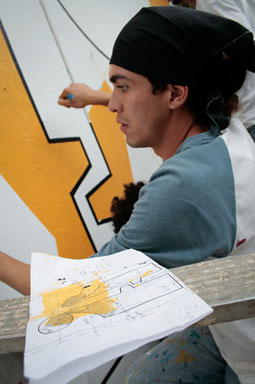Visit Audio Recordings for the audio version of this section.
LEARNING OBJECTIVE
- Understand different methods of typing projects.

Aaron J. Shenhar and Dov Dvir1 developed a typology—classification or profile—of projects that reflected two dimensions. The first dimension reflected the technological uncertainty and ranged from low tech, medium tech, and high tech to super high tech. Although projects involve the use of various levels of technology, Shenhar and Dvir developed criteria for each type of technological uncertainty that enabled the project to be typed. The second dimension reflected the system scope. The system scope dimension ranged from assembly projects that dealt with building a single component, to system projects that included interactive elements, to array projects that included a wide dispersal of interactive systems and subsystems.
Shenhar and Dvir observed that the project execution approach was connected to the project type. The study identified different management patterns associated with project type as well as different management tools and practices. As the project system scope became more complex and the system scope of the project became larger, more sophisticated management tools were put in place to reduce project uncertainty. As project technology increased, project managers became more invested in processes to manage technical issues such as redesign and testing. As projects increased in system scope, project managers became more invested in formal planning and control issues. In later research, Shenhar2 developed recommendations for adjusting the project management approach based on the project typology. For example, project managers will use more risk management techniques (see Chapter 11) when the technological uncertainty is high.
Robert Youker3 identified basic differences in project types. Among the attributes he used were the uncertainty and risk, level of sophistication of the workers, the level of detail in the planning, the newness of the technology, and the time pressure. Youker also looked at project size, duration, geographic location, number of workers, cost, complexity, urgency, and organizational design as attributes that help determine a project profile.
KEY TAKEAWAYS
- There are many different typology methods to consider when characterizing a project in order to meet its specific needs and scope. Some things to consider might be technological uncertainty and complexity of scope, risk, worker sophistication, location, urgency, and organizational design.
[1] Aaron J. Shenhar and Dov Dvir, “Toward a Typological Theory of Project Management,”Research Policy 25 (1996): 607–32.
[2] Aaron J. Shenhar, Adapting Your Project Management Style: The Key to Project Success (Hoboken, NJ: Stevens Institute of Technology, 1999).
[3] Robert Youker, “Defining the Hierarchy of Project Objectives,” IPMA Conference (Slovenia: American Society for Advancement of Project Management, 1998).
